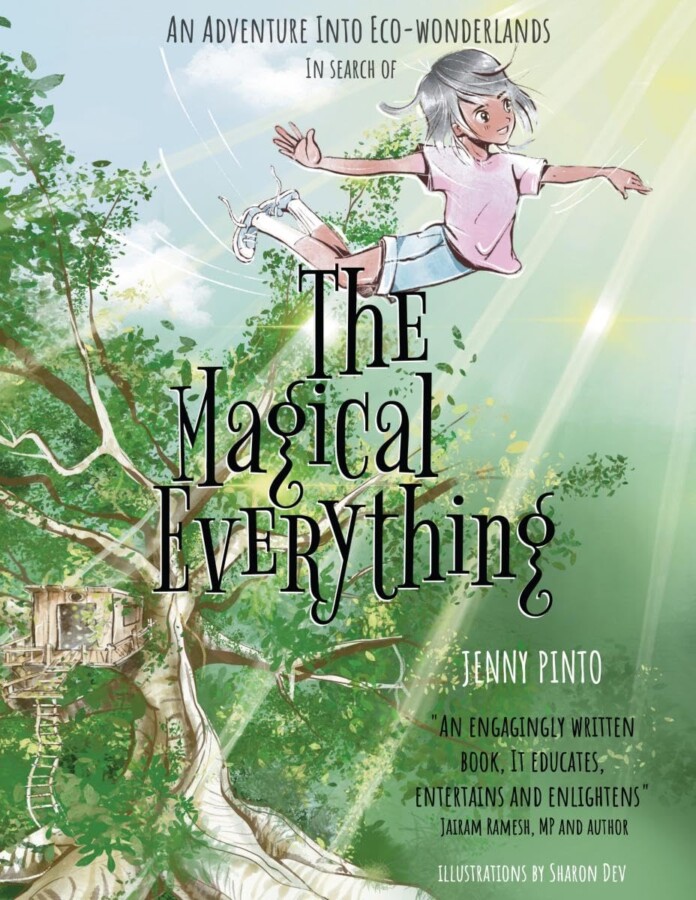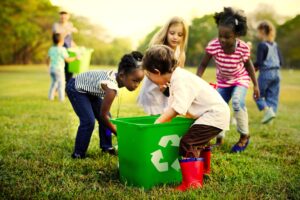In 2018, the year I became a grandmother, my consternation about climate change peaked. What kind of world will it be, when my granddaughter becomes an adult, I worried. The picture of the future seemed so overwhelming; it was difficult to navigate even in my mind. I felt compelled to do something, but what could an ordinary, non-academic, non-scientist, non-entity in the climate space, namely me, really do to make a difference?
“To solve this problem, we need to understand it,” were the wise words of young Greta Thunberg, about climate change. These words stayed with me and in 2020, a year (or 2) that made many things out of nobodies all over the world, (yes, locked down, many people discovered their inner chef/designer/artist/writer/desire) I decided to put all my experience and understanding of life and climate change, into a book dedicated to my granddaughter (and her generation). 4 years later I published “The Magical Everything” – A hybrid graphic novel for middle and high schoolers.
Using science textbook concepts as a foundation, the book tells the story of climate change, through the history of evolution, biodiversity, interconnectedness of nature and energy balance on planet Earth. The story is a dream-adventure of a young 14-year-old girl, Ila. In her quest to find out what made life possible and what sustains it, on planet Earth.
Ila’s search for the answers, takes her through time, space and the ecosystems. She meets various characters, both human and non-human and learns – what I wish I had learnt in school – that everything on Earth is connected and that life is a magical, self-organizing, self-sustaining system, until Sapiens disrupted the rhythm and balance. She learns from Mira, a whale how the ocean provides the planet with oxygen. She learns from Hanu, the langur, how forests make rain. She learns from Wrom, the earthworm, how the soil provides food. But none of them can help her find out what the Magical Everything really is. But Ila doesn’t give up until she finds out. No hints or spoilers, sorry! Read the book!
The book was 25 years in the making. Back in the mid 90s I made a career shift from advertising to design. I built my design practice from scratch, making handmade paper and lighting accessories from agricultural and other waste material around Bangalore. The practice grew and today goes by the name of Oorjaa Design, (www.oorjaa.in).
Oorjaa has become a formidable presence in the sustainable lighting space. However, growing the practice, using only waste as raw material, refining processes and packaging with lighter footprints, through the last 25 years, taught me a great deal about circularity, systems and regeneration on this amazing planet we inhabit.
“The more clearly we can focus our attention on the wonders and realities of the universe about us, the less taste we shall have for its destruction,” said Rachel Carson, and that thought pretty much underlined my journey as a designer as I began to explore the circularity of the planet’s amazing systems. But it also raised a lot of questions in my mind, specially about our linear economy and waste. My interest in waste also led me to TAICT, (www.taict.org), a waste management NGO, the co-producers of this book.
The climate crisis is the greatest challenge humanity has ever faced. This is a refrain most of us have probably read or heard over and over again in the last few years. Yet, how have we, as a civilization really engaged with this challenge?
Apart from a small fragment of society, scattered all over the world, most of us have either denied or ignored the warning signs or found acceptable ways and methods to continue with business as usual within the paradigm of our extractive “economosphere”, without addressing systemic problems. Why? I have come to believe that it is because, as a society, we have completely distanced ourselves from nature’s systems and today most of us have very little understanding of it.
It really starts with our school education. The education most of us receive, gives us the science but veers us away from really understanding this wonderful planet we all inhabit. We acquire many other skills and heaps of information, but not the wisdom to respect or align with the planet’s ability to create and regenerate. In fact, our education mainly equips us to use our knowledge to utilize the planet as a boundless resource. As a consequence, most of us have no qualm or conscience about trashing it. The book -The Magical Everything – I hope, makes a small contribution to address that lacuna.
In the book, Ila is sent on a quest to find the Magical Everything, that she is told, is what connects all life on planet Earth. “Where do I even begin?” She asks the astronaut Ramanujam, who she finds herself with, in a space ship deep in space.
“By understanding,” he answers. “Understanding eventually leads us to doing the right thing” and with those words he sends her off, tumbling through space, towards Earth.











